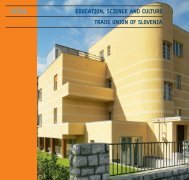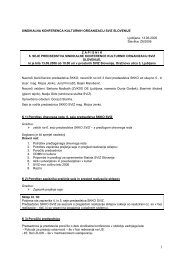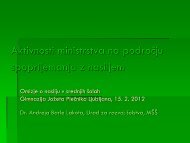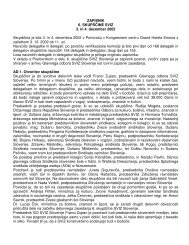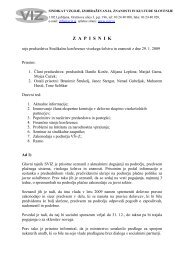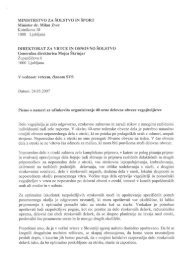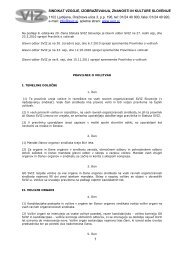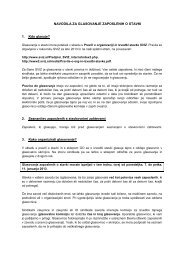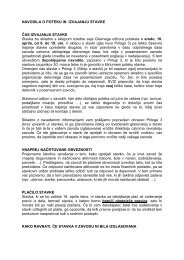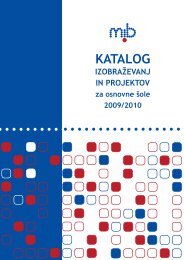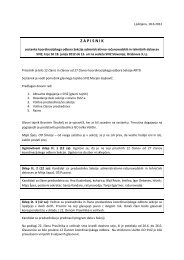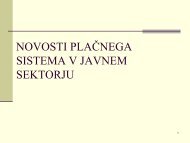Create successful ePaper yourself
Turn your PDF publications into a flip-book with our unique Google optimized e-Paper software.
Johann Sebastian Bach’s obituary speaks of five passions by the Leipzig<br />
cantor. Only two of them have survived with music, and today’s listener thinks<br />
first of the St Matthew Passion, with the St John Passion often remaining in<br />
the shadow of its younger brother. This preference is unjust: the St John Passion<br />
was, for instance, highly regarded by Robert Schumann, while in Bach’s<br />
biography Albert Schweitzer writes that after some initial difficulties with this<br />
work it eventually grew closer to his heart than any other.<br />
The Leipzig tradition specified the performance of the passion from the chorale<br />
hymnal of Gottfried Vopelius on Good Friday. From around the beginning<br />
of the 18 th century, the Protestant Church had begun to implement a more<br />
modern passion, containing recitatives and arias along with instrumental<br />
accompaniment. In Leipzig’s Neukirche (New Church) the passion oratorio was<br />
first performed on Good Friday in 1717. The Leipzig cantor, Johann Kuhnau,<br />
did not agree with this, but the townsfolk flocked to the Neukirche so the city<br />
council suggested to him and that he should prepare similar music. They<br />
agreed to perform the oratorio passion in the place of the rhymed chorale<br />
passion during the vespers, and so in 1721 Kuhnau performed the St Mark<br />
Passion at the St Thomas Church.<br />
It was foreseen that the following year the performance of the passion would<br />
be held at the St Nicholas Church, and then in 1723 it would again take<br />
place at the St Thomas Church. However, Bach, who became the cantor<br />
of Leipzig in 1723, was not informed of this decision, and so prepared the<br />
St John Passion for performance on Good Friday (7 April) in 1724 at the St<br />
Thomas Church. Four days before the performance, the city council requested<br />
that Bach perform the work at the St Nicholas Church. For the performance<br />
Bach most likely combined the best two choirs from the St Thomas School<br />
to make up the chorus, and supplemented the permanent instrumentalists<br />
with additional players.<br />
To the texts from the Gospels According to St John and St Matthew, Bach<br />
added poems from texts by Heinrich Brockes (especially from the paraphrase<br />
of the biblical story of the passion Der für Sünde der Welt Gemartete und<br />
Sterbende Jesus from 1712), Christian Weise and Christian Heinrich Postel.<br />
However, the solid core and the architectural foundation of the passion remains<br />
the message from the Gospel, with the scene of the judgment of Jesus<br />
taking the central position. The biblical text is sung in recitatives by the soloists<br />
(the Evangelist, Jesus, Peter, Pontius Pilate, etc.) and the chorus (the high<br />
priests, the Jewish people, the Roman soldiers, etc.). These are occasionally<br />
interrupted by homophonic settings of verses of Protestant chorale and socalled<br />
‘madrigal’ compositions in verses, most frequently in the form of arias.<br />
The passion is divided into two parts: the first was performed before the<br />
vespers sermon, and the second after it (almost completely overshadowing<br />
the sermon according to reports by some of Bach’s contemporaries). The first<br />
part of the passion is framed by two chorales and the second part is followed<br />
by Gallus’ motet Ecce quomodo moritur justus. The first part speaks of the<br />
betrayal of Jesus in the garden of Gethsemane, and about Jesus’ hearing<br />
before the high priests. Bach’s temporal arrangement of Peter’s disavowal<br />
PROGRAM / PROGRAM<br />
145



